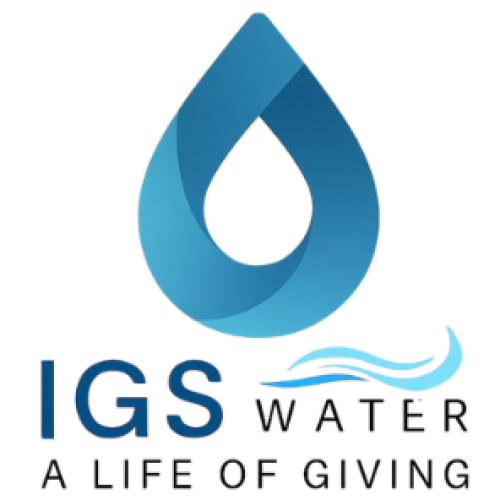Ponds can be peaceful, beautiful focal points for landscapes, farms, or aquaculture systems. But without proper maintenance, they can devolve into smelly, murky, oxygen-starved water bodies that threaten aquatic life and spoil the scenery. That’s where a pond aeration (or destratification) system proves its worth.
In this blog, let’s explore what a pond aeration system is, how it works, and why deploying one is a smart move for maintaining water quality, ecological balance, and long-term pond health.
What Is a Pond Aeration / Destratification System?
A pond aeration (or destratification) system is designed to circulate water vertically and horizontally through the pond—mixing warmer surface waters with cooler depths, and distributing oxygen evenly throughout.
Here’s how it works in broad strokes:
- Water is drawn from multiple parts of the pond—especially deeper or more stagnant zones—through intake manifolds.
- As the water circulates, it passes through a conditioner and an aerator chamber. Differences in pressure create turbulence, increasing the contact between water and air.
- The system introduces air (or gas) into the water; bubbles rise, helping drive a thermal flow. Cooler, oxygen-rich water gets drawn down, while warmer water rises.
- The continuous mixing “breaks up” stratification (layering) and promotes a more uniform, oxygenated water column.
By actively “stirring” the water, the system prevents problems associated with stagnant, layered ponds. (These descriptions are based on the product presentation of IGS Water’s design.)
Why Your Pond Needs Aeration
Over time, ponds tend to separate into layers (thermal stratification). The bottom layer becomes isolated, stagnant, and low in dissolved oxygen. This creates an environment ripe for sludge, foul odors, and harmful gas buildup.
Below are key reasons why aeration is critical:
1. Improves Water Quality
Aeration helps distribute oxygen throughout the pond and prevents accumulation of sludge and harmful gases.
2. Boosts Oxygen Levels
Fish, plants, and beneficial microbes need dissolved oxygen to survive. Aeration ensures that deeper layers are not starved of oxygen.
3. Reduces Odors
Anaerobic (oxygen-deprived) zones produce odors (hydrogen sulfide, methane, etc.). By oxygenating the water, the system mitigates these smells.
4. Controls Algae Growth
Algae blooms thrive when nutrients stagnate. Aeration helps circulate nutrients and makes conditions less favorable for nuisance algae.
5. Prevents Fish Kills & Layer Collapse
In warm weather or during turnovers (sudden mixing events), oxygen levels can plummet dangerously. Aeration stabilizes oxygen distribution and reduces the risk of massive fish stress or die-offs.
6. Helps with Sediment / Nutrient Release
When bottom layers stay anoxic, phosphorus and other nutrients can become mobile and fuel further degradation. Aeration can suppress that release by keeping conditions aerobic.
Applications & Use Cases
Because of its benefits, such an aeration / destratification system is useful across various sectors:
- Aquaculture & Fish Ponds – to ensure fish stay healthy, minimize stress, and enhance yield.
- Farmland & Irrigation Ponds – to keep water usable and minimize odor and algae buildup.
- Landscape & Decorative Ponds – improving clarity, aesthetics, and ecological balance.
- Stormwater / Wastewater Ponds – where biological processes benefit from enhanced oxygen and circulation.
- Golf Courses, Parks, Resorts — for keeping ornamental ponds clean and inviting.
The product materials suggest their system is built for adaptability to different pond sizes and conditions.
Design Considerations & Best Practices
To get the most from a pond aeration system (or any air / circulation system), several design and operating factors matter:
Placement & Depth
- Intake ports should reach low depths to access stagnant zones.
- Diffusers / aeration chambers should be positioned to promote vertical mixing.
Flow & Volume
- The system must move enough water to overcome stratification. Under‐sized systems may only disturb surface layers without reaching the depths.
Air / Gas Contact Efficiency
- The design must maximize how much air dissolves into water (i.e. smaller bubbles or turbulent mixing) rather than just releasing gas that rises unused. The use of conditioners and aerator chambers in the IGS design helps with this.
Maintenance & Clogging Prevention
- Suction intakes must avoid clogging with algae, silt, or debris.
- Diffusers and tubing should be cleaned or replaced periodically to maintain efficiency.
- Pumps, valves, and manifolds need regular inspection.
Energy Efficiency
- Running the system continuously or in cycles depends on climate and pond use.
- Using efficient pumps or variable drive motors can reduce operational costs.
Monitoring
- Track dissolved oxygen (DO) levels at different depths.
- Observe fish behavior, water clarity, and odor as qualitative signs.
- Adjust the system (flow, location, schedule) based on feedback.
Realistic Expectations & Limitations
While aeration is powerful, it’s not a cure-all. Some caveats:
- Nutrient Overload: If the pond has a heavy nutrient input (fertilizers, runoff, waste), aeration alone may not fully control algae or eutrophication.
- Sediment Removal: Aeration promotes breakdown of organic matter, but deeply compacted sludge might require dredging or physical removal.
- Cost: Installation, electricity, and maintenance all incur costs—so sizing and system efficiency matter.
- Extreme Conditions: In extreme heat or cold (ice cover), additional strategies may be needed.
- Design Sensitivity: Inadequate or mis-designed systems may cause unwanted disturbances without the full benefits.
Bringing Your Pond Back to Life
A well-designed pond aeration / destratification system can transform a struggling pond into a healthy, balanced aquatic ecosystem. By continuously mixing and oxygenating the water, you reduce odors, control algae, prevent fish mortality, and maintain clearer, more stable water.
If you’re considering adding or upgrading aeration for your pond, start by assessing your pond’s depth, volume, existing water quality, and biological load. From there, choose a system suited to your scale and keep monitoring performance over time.

